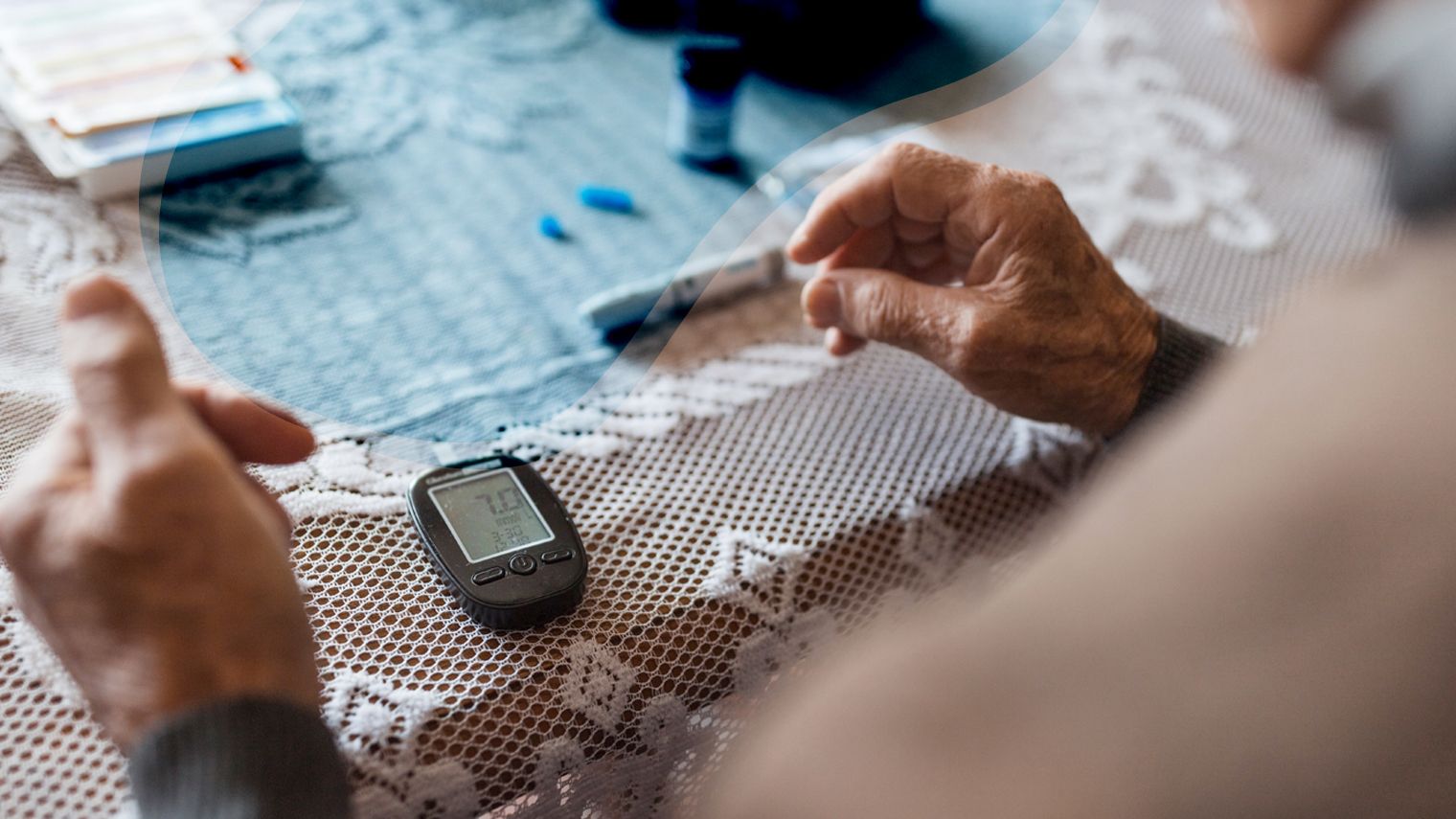How to Choose Between a Continuous Glucose Monitor or Blood Glucose Meter
July 03, 2024
Content created for the Bezzy community and sponsored by our partners. Learn More

Photography by Dobrila Vignjevic/Getty Images
Both continuous glucose monitors (CGMs) and blood glucose monitors have advantages and disadvantages. Here’s how and why I made my choice.
I remember watching my dad check his blood sugar levels when I was younger. He’d have the dial on his lancing device turned to the deepest setting because his fingers were calloused from checking his blood sugar so often.
So, when I received a type 2 diabetes diagnosis over two decades ago and doctors prescribed me a blood glucose meter of my own, I absolutely dreaded it.
I cringed at the thought of having to do this to myself, so I didn’t. Instead of checking my fasting blood sugar daily as the doctor asked me to, I’d check it every few weeks, lie to my doctor, and make up numbers.
Once I was prepared to face my diagnosis head-on, I wanted all the data I could get my hands on.
Looking back, it wasn’t so much that I was scared of pricking my finger. It was more accepting the realization that I wasn’t healthy. If I saw high numbers, it made my diagnosis a reality, and I wasn’t ready.
Once I was prepared to face my diagnosis head-on, I wanted all the data I could get my hands on. I started checking my blood sugars more often: fasting, before and after meals, and before bed. All these finger sticks left my fingertips bruised and sore.
I was so relieved when my doctor suggested a continuous glucose monitor and was looking forward to the relief it would bring.


How do continuous glucose monitors work?
A CGM is a device inserted into your skin that continuously measures your blood sugar, giving you real-time readings.
A few different types are available on the market, and most devices last anywhere from 10 days to 2 weeks before needing to be replaced.
Research published in 2019 tells us that CGMs measure the glucose in your interstitial fluid (found around cells) instead of your blood like a traditional blood glucose monitor.
Readings are taken on the CGM as often as every 5 minutes, allowing you to see the immediate effects of nutrition choices, activity, illness, or emotional stress.
How does it differ from blood glucose testing?
Both testing options have benefits and drawbacks. While a CGM provides continuous data, a blood glucose monitor only provides a snapshot in time, limiting insight into trends and patterns throughout the day.
CGMs also allow data sharing with loved ones, caregivers, and medical professionals, creating better monitoring and support.
Compared to fingerstick testing, the CGM means fewer needle pricks, squeezing blood, and using glucose meter strips. A continuous glucose monitor can also be set up to sound alarms if your levels get too high or too low.
This is especially helpful for people with hypo-unawareness, where their body doesn’t show symptoms of low blood sugar.
CGMs are often more expensive and not always covered by insurance, making them less accessible than traditional blood glucose monitors.
I’ve learned how stress, illness, exercise, weight loss, and my favorite indulgences affect my blood sugar. This has helped me make treatment decisions, plan ahead, and discover patterns and trends in my daily routines.
Why I chose a CGM
I chose a CGM as my primary glucose monitoring device because I wanted real-time, continuous readings to make more informed decisions, mainly with my nutrition.
I love that I can put on a sensor and not have to worry about needles and finger sticks for the most part. Over the last 7 years with a CGM, I’ve lost about 100 pounds.
The knowledge I’ve gained about my body from all the CGM data has been a game changer in my diabetes management, especially as I’ve needed to reduce medication dosages as my weight has gone down.
I’ve learned how stress, illness, exercise, weight loss, and my favorite indulgences affect my blood sugar. This has helped me make treatment decisions, plan ahead, and discover patterns and trends in my daily routines.
Though I primarily use my CGM, there’s still a place for my blood glucose monitor in my diabetes care. I use it mainly when my CGM alerts me to low blood sugar. I use my traditional meter to confirm if I’m having a low or if the CGM is off-kilter.
Though CGMs have come a long way in terms of their accuracy, a finger stick will still give me the most accurate reading, so I always use my traditional blood glucose monitor before making treatment decisions.
Takeaway
Both CGMs and blood glucose monitors have advantages and disadvantages. Ultimately, the choice between the two really depends on individual preferences, lifestyle, and out-of-pocket costs.
CGMs offer continuous monitoring and insights, but may be more costly and less accurate. On the flip side, blood glucose monitors are usually more affordable, but lack the advanced technology of a CGM like continuous monitoring and data sharing.
No matter which testing method you choose, regular blood sugar monitoring is essential for successful diabetes management.
Medically reviewed on July 03, 2024
3 Sources


Like the story? React, bookmark, or share below:
Have thoughts or suggestions about this article? Email us at article-feedback@bezzy.com.